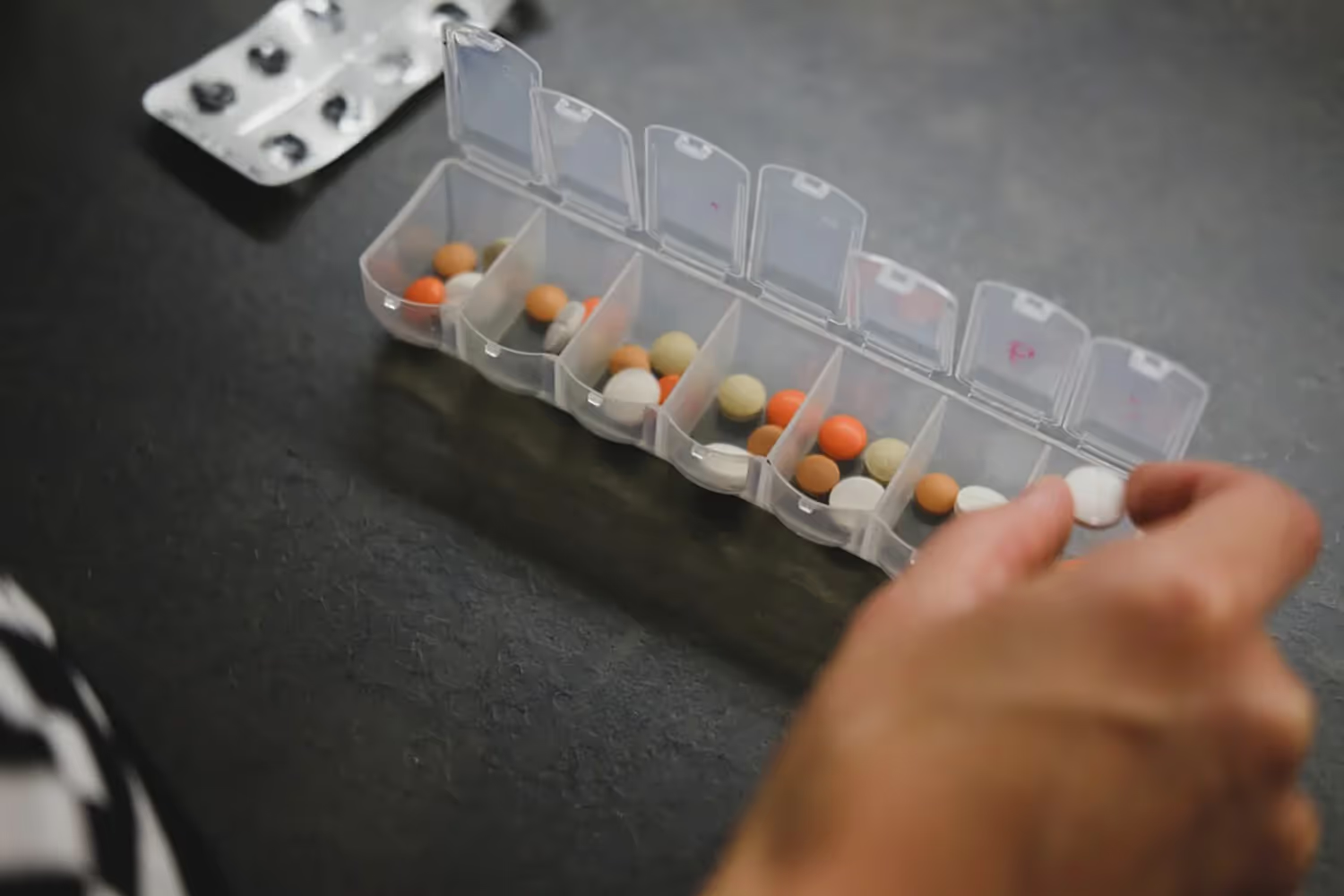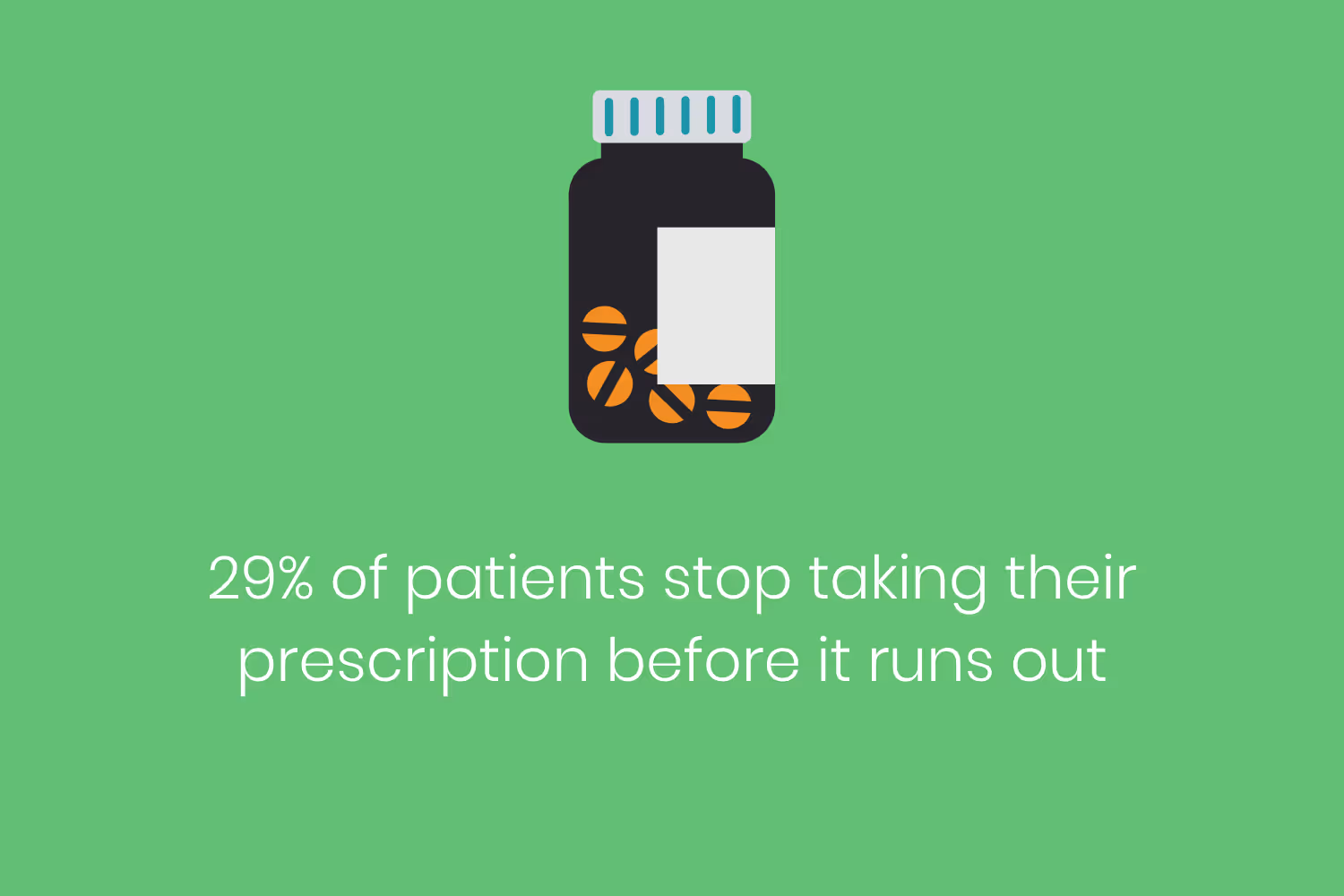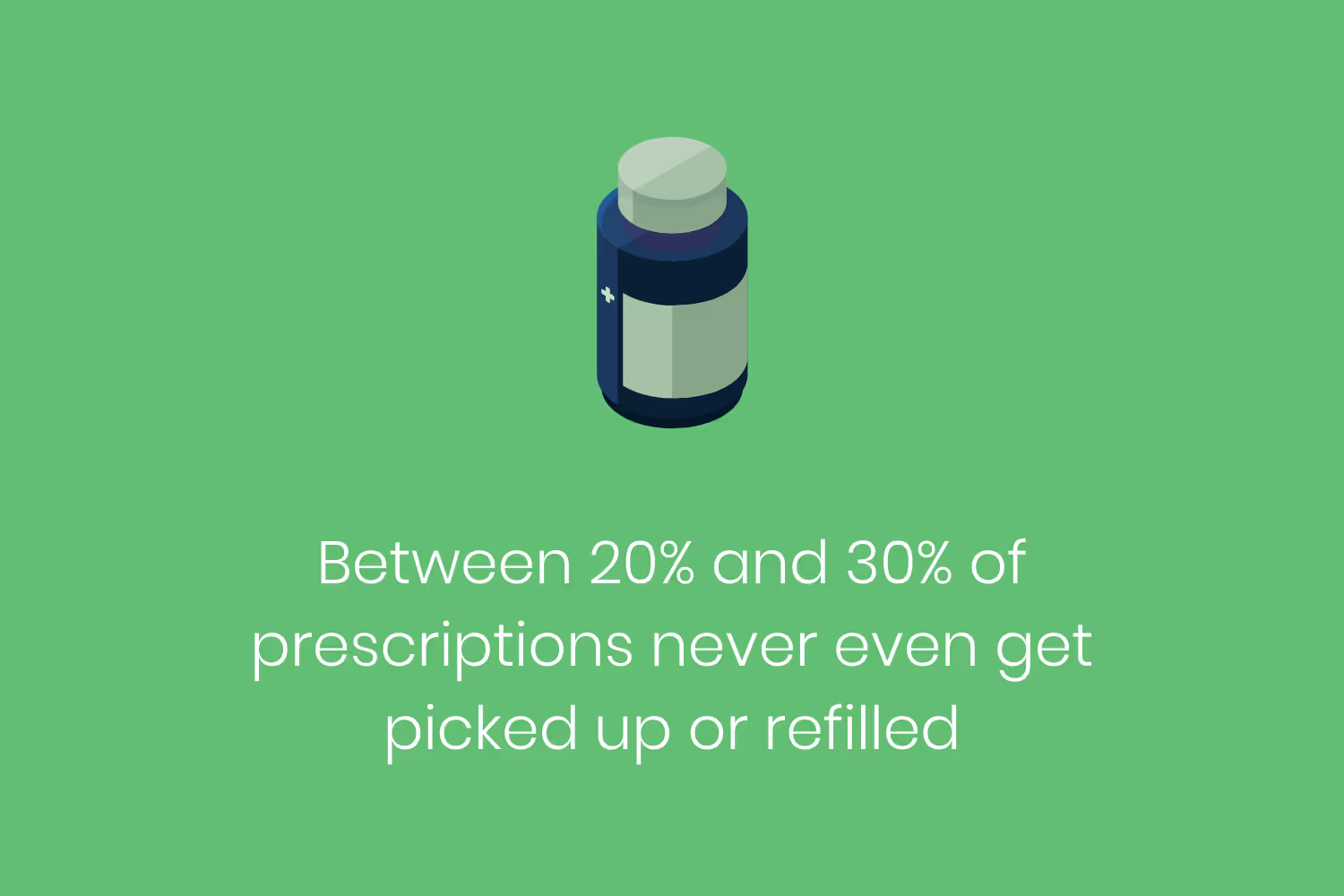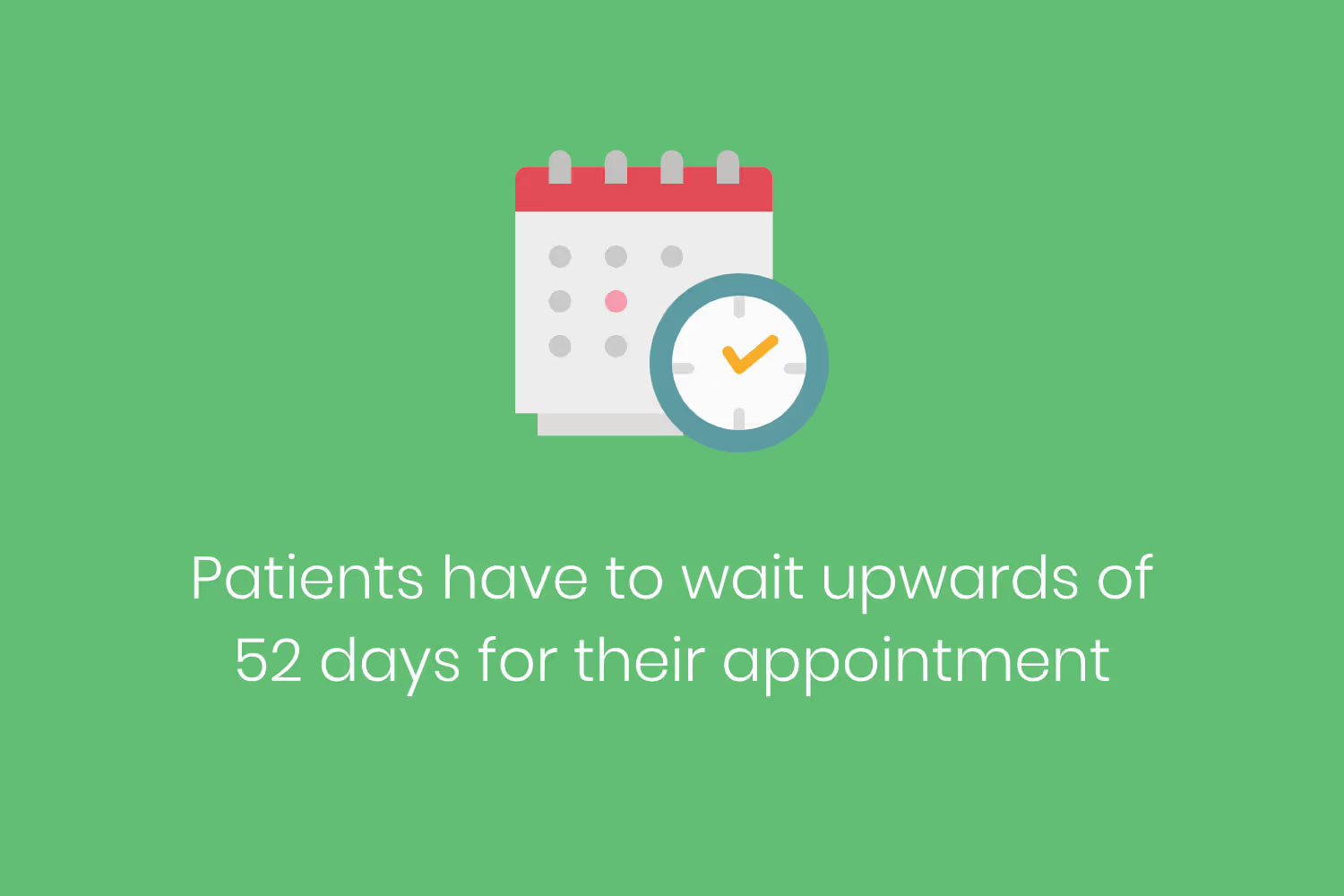How to Encourage Medication Compliance: The Easy Way
If people don’t follow their treatment plan, it just leads to more problems. Ultimately, it’s up to the patient to comply with the instructions you give them. But there are still ways that professionals can encourage medication compliance.

Everyone has a reason for going to the doctor.
While it might be for a simple routine checkup, a lot of visits are for treatment or medical opinion. We all know what happens during an appointment, doctors give their advice and a plan for healing. Sometimes, this includes medication to resolve whatever ailment the patient is experiencing.
Yet a lot of people disregard the directions of their medicine. Half of the prescriptions for chronic diseases get used incorrectly. That leads to 10% to 25% of hospital and nursing home admissions due to noncompliance.

Even worse, about 125,000 people die each year just in the United States because they didn’t follow prescription directions.
If you work for a practice or hospital, you want to prevent all of this from happening. If people don’t follow their treatment plan, it just leads to more problems. Ultimately, it’s up to the patient to comply with the instructions you give them. But there are still ways that professionals can encourage medication compliance.
Tell Them What to Expect
The first step is to educate patients on what to expect from their treatment plan
People who don’t have a medical background won’t understand how their prescribed drugs work. Some could take longer to work or only be effective after the entire dosage. Around 29% of people stop taking their medicine before it runs out.

Medical professionals should inform their patients on how long to expect a prescription to start working. They must also explain how many doses are necessary to be fully effective. Otherwise, people might decide to stop taking it too early if it doesn’t seem like it’s working or like it’s already fixed the problem.
People might also stop taking prescriptions if they experience a side effect or think their condition is getting worse. They might even neglect to take it just because they worry about a potential side-effect. Of course, allergic reactions are a concern and patients should discuss these with their doctor. Or worse, read about the negative side-effects online.
After all, prescription bottles warn that if symptoms get worse or new symptoms appear to contact a medical professional.
Some people stop taking medicine for this reason but don’t inform their physician. One-third of people stop their prescription drugs without telling their doctor. This leads to other problems because they won’t be getting another treatment for their condition.
Sure, it may reduce new or worse symptoms. But they won’t be able to improve their existing condition if they don’t tell their doctor that they stopped the current plan.

Neglecting to get a new medicine would only cause the existing problem to continue. Doctors should educate about the danger of stopping treatment without another alternative.
By encouraging people to contact the doctor with any concerns, patients will let the doctor know if they feel they need to stop the medication. Physicians can then provide a different treatment after the patient stops their current plan.
Provide a Copy of Thier Treatment Plan
One reason for prescription noncompliance is that people don’t understand their treatment or its directions. Like with anything else, if instructions are too complex, people are less likely to follow them correctly.
A great example of the point I just made is Terms of Service Agreements. You know those super long, lengthy windows that pop-up right before you download software on your computer? Well, 97% of users agree to Terms of Service Agreements before reading them. Granted they’re a little bit longer than prescription directions but you get my point.
Having a schedule or handout that explains the plan will help them understand how to follow it. They can visualize it rather than needing to read the tiny label on the drug bottle every day.
People won’t need to remember when the label states to take it because they can keep the handout in a place that will remind them. They could put it on their bedside to remember to take it when they wake up or go to bed, or keep it on the fridge so they know to take it with a meal.
Easy-to-Understand Label Design
An estimated 90 million adults in the US don’t understand their prescription labels or struggle to follow the directions on them. As I already mentioned, many of them will then experience health problems for not taking their medicine as directed.
Confusing dosage directions lead to taking too much or too little of a dose. For example, “take two pills twice daily” could make someone think it means taking two pills total, at two different times during the day. But rather this means take four pills total, with two pills at two different times.
The legibility of text can affect how someone understands information. Older demographics especially struggle to read the text if it’s too small or overcrowded. But there’s a set of guidelines for labels so pharmacies can make directions easy to understand.
Some of these recommendations include...
- Stating both the drug brand name and generic drug name
- Critical information should be at the top and use a minimum 12-point font
- All information should be high-contrast print (black ink on a white label)
- All information should a minimum 10-point font with a simple, uncondensed font
- All text should be horizontal so consumers don’t have to turn the container to read it
It also includes specific guidelines for dosing information:
- Separate the dose amount and the timing of each dose
- Use numerals to represent numbers rather than spelling out the numbers
- Dosing instructions should be explicit (i.e. morning, noon, evening, and bedtime)
- Avoid intervals (i.e. twice daily, every 6 hours) and specific times (8 am and 6 pm)
Pharmacies don’t always follow these since it’s up to each state’s board to adopt these standards. But it’s necessary to make labels the least confusing as possible with the most legible design. This promotes adherence when patients can easily read and understand labels.
One artist came up with an effective design that the CVS pharmacy adopted in 2017. It ensured that people could identify when to take their medicine and how much of each dose they needed.
Deborah Adler, a designer for Target’s ClearRx prescription, was the lead designer for the CVS ScriptPath system. She worked with CVS Health to develop a label that was easier for people to understand. The simplified dosage schedule uses color-coded icons to show the times that patients must take their medicine. It also uses larger text for increased readability.
Collaborate with Pharmacists
Communication between physicians and pharmacists is important to encouraging medication compliance.
Between 20% and 30% of prescriptions never even get picked up or refilled. But if these medical professionals communicate with each other, they can better identify who isn’t filling their prescriptions.

A pharmacist can let the primary doctor know if someone isn’t adhering to their plan so that the physician can contact the patient. They can get a better understanding of why the person isn’t taking the medicine and assist with any concerns.
The pharmacist can fill some of these gaps, too. Maybe the patient doesn't understand the directions. Or maybe they simply don’t recognize the generic drug name that’s different from the brand name they’re familiar with. Pharmacists can help answer any questions so that clients are more likely to take their treatment directions.
An assessment of pharmacist and family-physician relationships focused on nonadherence.
Over half of the pharmacists communicated with the physician if they noticed that a patient had a problem with nonadherence. These pharmacists gave more advice to clients compared to those who hadn’t communicated with the physician. The study found that pharmacist communication increases medication adherence.
Schedule Follow-Up Visits
I mentioned earlier how some patients will stop taking their medication altogether. There are two scenarios that lead to this happening…
- They might assume that it’s already helped their condition before the dosages are complete.
- They might think it isn’t helping at all or that it’s making their condition worse
Scheduling a follow-up visit while patients are taking the drug can encourage them to continue it at least until they see the doctor. These assessments can serve as a checkpoint in case people have concerns about how their treatment is working.
This is an opportunity for the doctor to remind individuals how important it is to complete their doses for it to be effective. It’s also a good time for doctors to measure effectiveness since some people are resistant to certain drugs. They can also discuss if it’s causing any other problems.
Medical professionals are busy, that’s understandable. In some cases, clients have to wait upwards of 52 days for their appointment. So how is scheduling follow-up visits fathomable?

Well, these appointments don’t have to be very long. In fact, you could templatize these appointments to make them go even faster. After all, they’re just checkups to see how a patient’s treatment plan is going.
A lot of people don’t want to continue taking drugs if they aren’t working. But they’ll listen to and follow through if their doctor determines it’s having a positive effect. But if it’s causing other issues, a physician can provide ways to solve those or switch the treatment plan.
Encourage Medicine Tracker Apps
Sometimes, people just flat out forget to take their prescriptions. One study found that this was the main reason for nonadherence with 60% of respondents saying that they skipped a dose due to forgetfulness.
The problem, though, is that forgetful people might then try to self-correct the mistake, but they end up taking the drug as it wasn’t directed.
For example, if they forget to take medicine the previous evening, they might overcompensate and take it when they wake up. But prescriptions don’t have arbitrary directions. It’s important to be consistent so the drug will have the intended outcome.
Luckily, there are so many healthcare apps that are improving the industry.
Some of these even help with medication adherence, such as Medisafe. Users input their prescription information so they receive reminders when to take their pills. This way, they’ll never forget so they stay on a consistent schedule.
Users can share reports with their healthcare professionals. This is another step for professionals to track progress and see if the patient’s following the directions correctly. The app even offers medication coupons and discounts which is helpful for those who simply don’t fill a prescription because of the cost.
It can be helpful if a professional assists patients when setting up this feature. Doing so can ensure that they fully understand the treatment plan. The step-by-step process serves as another way to teach the prescription instructions. This way, patients are confident in following their plan once they’re home.
Conclusion
While so many people receive prescriptions, nearly half don’t take them correctly.
That statistic alone proves that there’s a discrepancy between what’s expected from a patient by a doctor and what ends up happening.
Think about it, people got to their nearest healthcare facility to receive treatment, but once they receive what they need they decide that they don’t need or want it anymore? No. That doesn’t make sense.
Even though the medicine compliance lands on the patient as their responsibility, there’s always a reason if they don’t. There are steps that can happen in the background that further medication compliance, regardless of where you land as a medical professional.
Emphasize your product's unique features or benefits to differentiate it from competitors
In nec dictum adipiscing pharetra enim etiam scelerisque dolor purus ipsum egestas cursus vulputate arcu egestas ut eu sed mollis consectetur mattis pharetra curabitur et maecenas in mattis fames consectetur ipsum quis risus mauris aliquam ornare nisl purus at ipsum nulla accumsan consectetur vestibulum suspendisse aliquam condimentum scelerisque lacinia pellentesque vestibulum condimentum turpis ligula pharetra dictum sapien facilisis sapien at sagittis et cursus congue.
- Pharetra curabitur et maecenas in mattis fames consectetur ipsum quis risus.
- Justo urna nisi auctor consequat consectetur dolor lectus blandit.
- Eget egestas volutpat lacinia vestibulum vitae mattis hendrerit.
- Ornare elit odio tellus orci bibendum dictum id sem congue enim amet diam.
Incorporate statistics or specific numbers to highlight the effectiveness or popularity of your offering
Convallis pellentesque ullamcorper sapien sed tristique fermentum proin amet quam tincidunt feugiat vitae neque quisque odio ut pellentesque ac mauris eget lectus. Pretium arcu turpis lacus sapien sit at eu sapien duis magna nunc nibh nam non ut nibh ultrices ultrices elementum egestas enim nisl sed cursus pellentesque sit dignissim enim euismod sit et convallis sed pelis viverra quam at nisl sit pharetra enim nisl nec vestibulum posuere in volutpat sed blandit neque risus.

Use time-sensitive language to encourage immediate action, such as "Limited Time Offer
Feugiat vitae neque quisque odio ut pellentesque ac mauris eget lectus. Pretium arcu turpis lacus sapien sit at eu sapien duis magna nunc nibh nam non ut nibh ultrices ultrices elementum egestas enim nisl sed cursus pellentesque sit dignissim enim euismod sit et convallis sed pelis viverra quam at nisl sit pharetra enim nisl nec vestibulum posuere in volutpat sed blandit neque risus.
- Pharetra curabitur et maecenas in mattis fames consectetur ipsum quis risus.
- Justo urna nisi auctor consequat consectetur dolor lectus blandit.
- Eget egestas volutpat lacinia vestibulum vitae mattis hendrerit.
- Ornare elit odio tellus orci bibendum dictum id sem congue enim amet diam.
Address customer pain points directly by showing how your product solves their problems
Feugiat vitae neque quisque odio ut pellentesque ac mauris eget lectus. Pretium arcu turpis lacus sapien sit at eu sapien duis magna nunc nibh nam non ut nibh ultrices ultrices elementum egestas enim nisl sed cursus pellentesque sit dignissim enim euismod sit et convallis sed pelis viverra quam at nisl sit pharetra enim nisl nec vestibulum posuere in volutpat sed blandit neque risus.
Vel etiam vel amet aenean eget in habitasse nunc duis tellus sem turpis risus aliquam ac volutpat tellus eu faucibus ullamcorper.
Tailor titles to your ideal customer segment using phrases like "Designed for Busy Professionals
Sed pretium id nibh id sit felis vitae volutpat volutpat adipiscing at sodales neque lectus mi phasellus commodo at elit suspendisse ornare faucibus lectus purus viverra in nec aliquet commodo et sed sed nisi tempor mi pellentesque arcu viverra pretium duis enim vulputate dignissim etiam ultrices vitae neque urna proin nibh diam turpis augue lacus.




